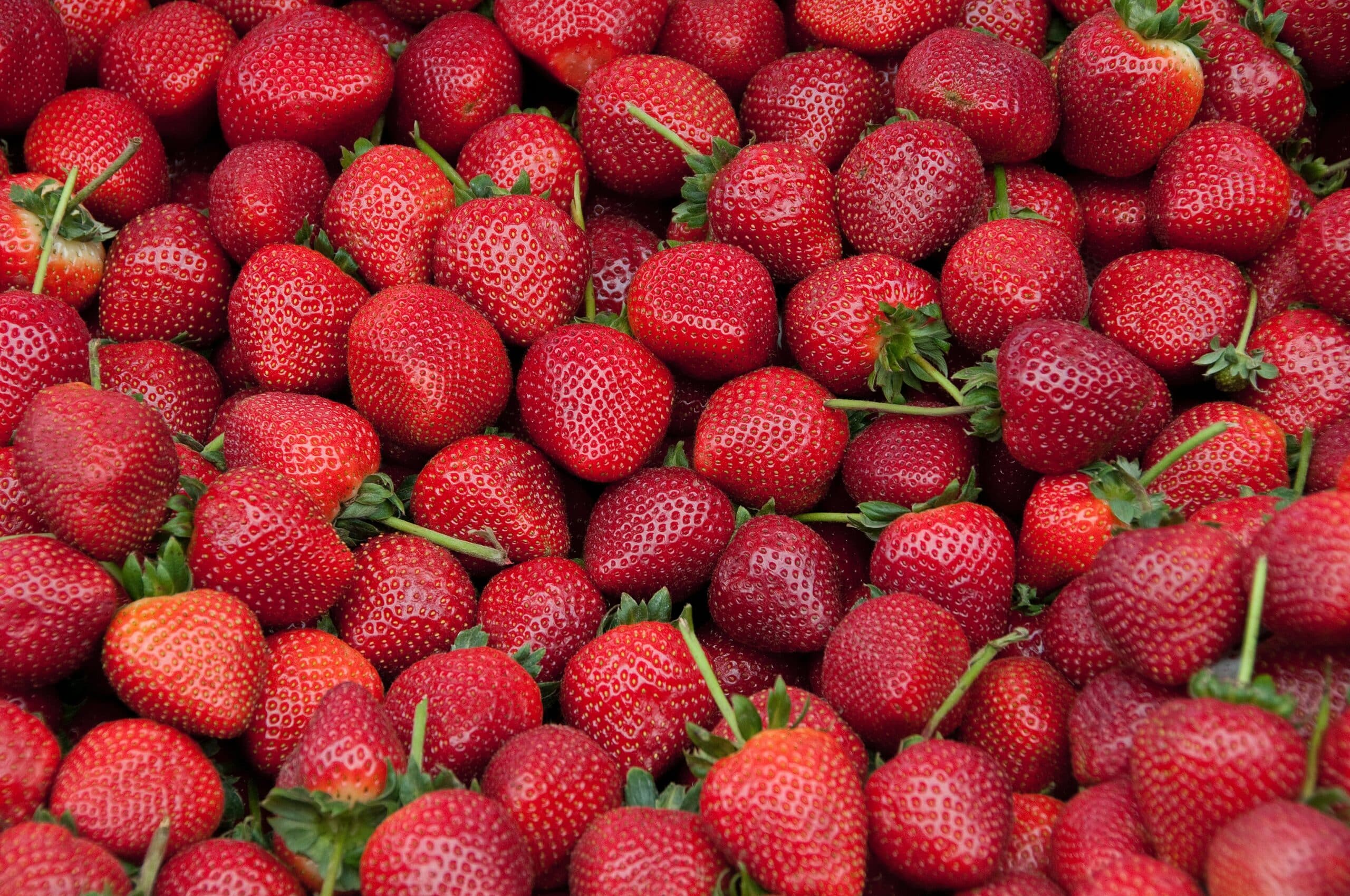Strawberries are one of the most popular fruits on the planet. They are delicious, nutritious, and easy to grow. Whether you’re a gardening novice or an expert green thumb, anyone can learn how to successfully cultivate their own strawberry plants. In this article, we will provide a comprehensive guide to growing and caring for strawberries and discuss some of the best practices for getting your berry patch off to a great start.
Do you want to reap the sweet rewards of homegrown strawberries? You can get started with just a few simple steps! To begin, let’s explore how to choose the right type of strawberry plant for your needs. There are many varieties available in nurseries and online stores that vary in size, flavor, texture, hardiness zone, and disease resistance. With so many options available it is important to select one that is well-suited for your climate and soil conditions as well as for your desired harvest time.
Finally, let’s look at some tips for planting and caring for your new strawberry plants. This includes understanding when and how often they need water, sunlight exposure requirements, fertilization schedules and more. By following these guidelines, you can create an environment where your plants can thrive so that you can enjoy fresh strawberries year after year!
Choose A Suitable Growing Area
Planning, positioning and preparing are paramount for propagating strawberries. Whether you’re sowing seeds or transplanting runners, selecting a suitable spot is the first step to success.
The ideal location should provide plenty of sunshine throughout the day and well-draining soil to prevent root rot. The area should also be sheltered from harsh winds that may damage plants, while allowing access for daily maintenance like watering and weeding.
When it comes to the growing environment, consider surrounding vegetation as this can affect the health of your strawberry patch. For instance, introducing companion plants like tomatoes can help deter pests and bring balance to your garden. With careful consideration of these factors, you’ll be well on your way to creating an ideal setting for strawberry cultivation.
Prepare The Soil
When it comes to growing strawberries, the type of soil you use is essential. Preparing the soil correctly will ensure your plants have access to the nutrients they need to thrive.
To properly prepare the soil for strawberry plants, it’s important to follow a few steps:
- Test your soil: Before planting your strawberry plants, you should test your soil to make sure that it has the right pH balance and nutrient content for optimal growth.
- Improve your soil: If needed, add compost or other organic matter to improve drainage and nutrient levels in the soil. This will help ensure that your plants get off to a good start.
- Fertilize: Once you have prepared the soil, apply a balanced fertilizer according to package instructions to provide your plants with extra nutrients.
Taking these steps will give you an ideal environment for strawberry growth and yield more fruit over time. All of this preparation pays off when it’s time to plant your strawberries—but we’ll cover that in the next section!
Planting The Strawberries
The seeds of strawberries, like the tiny sparks of a firework, represent the potential for something great. They are little reminders that nature provides us with powerful tools to create something special. Planting these seeds and providing them with the right care is one of the most rewarding activities a gardener can experience.
The planting process is quite simple but incredibly important. You’ll need to select a spot in your garden that will provide the strawberries with enough sunlight and soil drainage—this is key! Depending on the type of strawberry you’re growing, you may need to use raised beds or containers so your plants have enough space. Make sure to give each strawberry seedling its own spot with plenty of room to grow.
Once you’ve found a suitable location for your strawberry plants, it’s time to get started! Dig holes about 6 inches deep and 12 inches apart, then fill them up with organic compost-enriched soil mix. Place the seeds into each hole and gently cover them with additional soil mix. Finally, water your plants thoroughly and make sure they get adequate moisture throughout their growing season. With proper care, your strawberry plants will soon be ready to harvest delicious berries!
Providing adequate sunlight for your strawberry plants is essential for encouraging healthy growth and ensuring a bountiful harvest season after season.
Provide The Strawberries With Adequate Sunlight
When it comes to providing strawberries with adequate sunlight, you can’t be too generous! Those juicy, red fruits will soak up every ray of sunshine they can get. Without sufficient sunlight, the plants won’t reach their full potential and may not even produce fruit at all.
Ooh la la – don’t underestimate the power of a little sun! Placing your strawberry plants in an area that receives six hours or more of direct sunlight each day is essential for success. If you live in a climate where the sun isn’t so reliable, try supplementing natural sunlight with artificial lighting instead.
To ensure your strawberries are getting enough light and heat, pay attention to the weather conditions and adjust accordingly. You want your plants to bask in all that good stuff—they’ll thank you when they reward you with an abundance of delectable berries! Onwards we go to watering these wonderful wonders… …by making sure they have enough moisture but not too much. Too little water can stunt their growth and cause the fruits to be small and sour, while too much water can cause the fruits to rot.
Watering The Strawberries
Have you ever wondered how to properly care for your strawberry plants? Watering is an important part of the process, and it’s essential to get it right. Let’s take a look at the steps necessary to ensure proper hydration of your strawberry garden.
First, you’ll want to check the soil moisture level before watering. Do this by digging down a few inches and feeling the soil with your finger. If it feels dry, then it’s time to water. It’s also important to note that too much water can be just as detrimental as not enough, so be sure not to overdo it!
When you’re ready to water, use a gentle stream and aim for the base of the plant. This will help keep the leaves from getting wet and reduce the risk of disease spreading through the garden. Additionally, avoid watering in midday when temperatures are highest as this can cause some plants to wilt or even die.
Providing adequate hydration is key for promoting healthy growth in your strawberry plants. The frequency of watering will depend on your location and climate conditions but typically weekly or bi-weekly is sufficient for most areas. Be sure to observe your plants closely so that you can adjust your schedule accordingly depending on how they’re doing. With careful attention and mindful watering practices, you can enjoy sweet strawberries all season long!
Fertilizing The Strawberries
Fertilizing the strawberries is an important part of their care. It helps to provide them with the necessary nutrients they need to grow and produce fruit. To ensure a successful harvest, it’s important to choose the right fertilizer, in the correct amount and frequency.
When fertilizing, be sure to use a balanced fertilizer specifically designed for strawberries. It should have more nitrogen than phosphorus and potassium, as too much phosphorus can prevent fruiting. Always follow the instructions on the label when applying the fertilizer. Too much or too little can be detrimental to your strawberry plants.
It’s also important to spread the fertilizer evenly around each plant, avoiding direct contact with foliage or stems as this could burn them. Watering immediately after application is recommended, as it helps move the nutrients into the soil for uptake by plants roots.
TIP: You may need to apply additional fertilizer after harvesting fruits; do so by following instructions on your chosen product’s packaging!
Controlling Pests And Diseases
Taking care of your beloved strawberries can be an enjoyable experience. With the right strategies, you’ll get to enjoy a bountiful harvest of these delicious fruits. One key step in this journey is controlling pests and diseases.
Controlling pests and diseases is crucial for protecting your strawberry plants from harm. This involves identifying any problems early on, such as spotting signs of infestation or disease on the leaves, stems, and fruit. You’ll then need to take measures to address the issue in a timely manner. For instance, if you notice that caterpillars are eating through your crop, you may decide to use an insecticide or natural pesticide to eliminate them. Additionally, practicing good hygiene and sanitation around your strawberry bed can help prevent infection from spreading further.
It’s also important to monitor your plants for disease symptoms such as yellowing of leaves or wilting of fruit. If you see any signs of a fungal infection like gray mold or powdery mildew, you should treat it immediately with fungicides and remove any affected parts of the plant. TIP: Make sure that you keep your plants well-watered during hot weather – this will help them stay healthy and strong against pests and diseases!
Pinching Off Flowers
Pinching off flowers is an important step in caring for strawberry plants. By removing the flowers, you’re allowing the plants to put energy into growing healthy roots and foliage rather than producing fruit. This ensures that your strawberries will have a stronger overall structure and will be better equipped to produce delicious berries throughout the season.
It’s important to note that pinching off flowers too early might harm the growth of your plants. To ensure successful pinching, it’s best to wait until any buds start to show signs of flowering. Then, you can pinch off just below the bud with your fingers or a pair of scissors. It’s also a good idea to remove any dead flower stalks as they appear, as this helps keep your strawberry bed looking neat and tidy.
By taking these steps, you’ll be ensuring that your strawberry plants are able to thrive and produce a bountiful harvest of sweet and juicy berries throughout the season. Moving ahead, it’s time to check if your strawberries are ripe and ready for harvesting – a process that will help you make sure you’re getting the most out of your crop!
Checking For Ripe Berries
It’s like a beacon of hope shining in the dark – checking for ripe berries. As sunlight streams through the leaves and illuminates the garden, it can be difficult to resist the temptation of harvesting too soon. But patience is key if you wish to reap a bountiful harvest of sweet strawberries.
Gently tugging on a strawberry to check its ripeness will give you an indication of whether or not it’s ready. If it comes away easily, it’s time to pick! The same goes for any other berries that you may have growing in your garden. Once they’ve reached full maturity, they can be picked and enjoyed.
Timing is everything when it comes to collecting your crop. Regularly inspect each berry as they mature so that you can make sure you get them off the bush at just the right moment for maximum flavor and sweetness. This way, your hard work will pay off with an abundance of delicious fruits!
Regular Harvesting
Regular harvesting of strawberries is essential for a successful and bountiful crop. It’s important to check the berries periodically for ripeness so that you can pick them when they are at their peak flavor. Regular harvesting also helps encourage more berry production, as the plant will put its energy into producing new fruits instead of trying to ripen existing ones.
Harvesting strawberries when ripe ensures that you get the best tasting berries and keeps your plants healthy. To do this, look for bright red (or yellow if you have an everbearing variety) berries with a glossy sheen. Gently twist or pull them from the stem and place them in a container lined with paper towels to absorb any moisture. If there are any unripe berries, leave them on the plant; they’ll be ready to harvest soon!
Regular harvesting of strawberries not only keeps your plants healthy and yields great-tasting fruit, but it also helps prepare your plants for winter. With fewer berries on the plant, it will be able to focus its energy on developing strong roots which will help protect it from frost damage during cold weather. Continue reading to learn more about how to protect your strawberries from winter weather!
Protecting The Strawberries From Winter
Once you’ve successfully established your strawberry patch, it’s important to protect the fruit from winter. Fortunately, with a little preparation, you can ensure that your strawberries will be safe and sound until the following spring.
First of all, it’s essential to keep the soil moist in order to protect the roots of the plants. Mulch is a great way to do this, as it will help retain moisture and provide insulation against cold temperatures. Additionally, make sure that you water your plants thoroughly before winter arrives so that they won’t become dehydrated during this period.
Finally, prune away any dead or damaged leaves and stems before winter comes. This will help ensure that your strawberry plants are able to withstand any extreme weather conditions they might encounter during the cold season. With these simple steps in place, your strawberry patch should remain healthy and ready for another season of abundant fruit!
As with any garden plant, replanting strawberries every year is key to keeping them producing plenty of juicy fruits for years to come.
Replanting Strawberries Every Year
Replenishing our strawberry patches every year can be a rewarding experience. It’s not only a way to bring life and vitality to our gardens, but it also brings us one step closer to enjoying delicious fruit. Replanting strawberries annually is an important part of their care and growth, as it helps keep them healthy and productive for years to come.
Achieving success with strawberries means understanding the importance of replacing them on a regular basis. The plants become exhausted over time, leading to decreased yields and weakened plants that are more susceptible to pests and diseases. Renewing our strawberry beds every year ensures that we’re getting the best yields possible from our hard work.
Replacing old plants with new ones provides an opportunity for us to improve upon the design of our garden beds, which can help ensure better harvests in future seasons. Additionally, by removing any diseased or damaged plants we can help prevent the spread of infections throughout our entire patch. With proper planning and maintenance, we can enjoy a bountiful harvest of sweet berries year after year!
Removing Old Plants
It’s often thought that replanting strawberries every year is the only way to keep them healthy and thriving. But is this really true? Well, while it’s important to replace old plants regularly, removing them correctly can also help maintain a strawberry patch’s health. Here are three tips on how to remove old plants:
- Start by cutting off the runners – these are the new growths that grow out from the main plant. Be sure to cut close to the ground.
- Using a trowel or garden fork, carefully dig up any remaining roots from around the base of the plant.
- Once all of the roots have been removed, you can dispose of the old plants in your compost pile or add them to your local green waste collection.
Removing old strawberry plants properly not only helps promote healthier new growth, but it also prevents diseases from spreading among other nearby plants. As well as removing old plants, it’s important to manage weeds in order for your strawberry patch to thrive. By controlling weeds and taking care when removing old plants, you’ll ensure that your strawberry patch remains healthy and productive for many years to come.
Managing Weeds
Weeding can be a tedious task, but it’s necessary for a successful and healthy strawberry patch. In fact, one survey found that weeds can account for up to 70% of the total growth in an area! That’s why proper weed management is essential in order to keep your strawberries thriving.
The key to controlling weeds is prevention. Before planting, you should remove all existing vegetation from the patch or garden bed. After planting, you’ll need to regularly check the area for any new weed growth and pull them out by hand as soon as possible. Mulching around the plants will also help prevent weeds from taking root in the soil.
In addition to these preventive measures, there are plenty of organic herbicides available that can help reduce the amount of weed growth without harming your plants. These products are safe for use on edible crops and will often provide long-term control over persistent weeds. With a bit of effort and maintenance, you’ll be able to keep your strawberry patch free of troublesome weeds – allowing it to produce a bountiful harvest! And speaking of bounties, next let’s talk about how composting can benefit strawberry plants.
Composting Strawberries
Composting strawberries is a great way to provide a natural fertilizer for your plants, and it requires minimal effort. In fact, according to the National Gardening Association, approximately 40 million households in the U.S. compost their food scraps annually. Composting strawberries is especially beneficial due to the high levels of nitrogen and other trace minerals they contain. Here are 3 benefits of composting strawberries:
First, composting strawberries helps you reduce waste by repurposing food scraps that would otherwise end up in landfills or incinerators. This can help the environment by decreasing methane emissions and preserving valuable resources such as water and energy. Second, composting strawberries provides an organic option for fertilizing your garden without using chemical products that may harm the environment or your health. Finally, composting strawberry scraps helps create healthier soil which leads to healthier plants with more abundant yields.
Composting strawberries is easy and simple. Start by gathering all of your strawberry scraps from meals or from harvesting ripe berries from your garden and add them to a pile or container of existing compost material such as leaves, grass clippings, or other vegetable matter. Then mix the ingredients together before adding some water to create a moist mixture with just enough moisture content to allow air circulation throughout the pile – this will help break down the material faster. Finally, turn the pile regularly (about once every 7-10 days) so that oxygen can reach all the material inside and speed up decomposition even further.
Using these steps will ensure that you have rich nutrient-filled soil that will make it easier for your strawberry plants to thrive! Composting not only reduces waste while helping sustain healthy gardens but it also serves as an opportunity to give back to our planet in a meaningful way – making it one of the most essential elements of sustainable gardening practices today!
Frequently Asked Questions
How Many Strawberry Plants Should I Plant?
When planning your strawberry garden, it’s important to consider how many plants you will need. While the exact number of plants can depend on a variety of factors, such as the size of your garden and the available sunlight, there are some general guidelines you can use to determine the best amount.
First, think about how much space you have to devote to your strawberry plants. If you have a small patch of land or a container garden, then fewer plants may be necessary. On the other hand, if you have a larger area available for planting, then more plants might be ideal.
Once you’ve figured out how much space you have for your strawberry garden, you’ll need to decide how many plants you want to grow. Generally speaking, it’s recommended that each plant produces from 10-20 berries per season. So if you’d like 2-3 quarts of strawberries each year from one plant then plan on planting at least 20-30 plants in total for a good yield. Additionally, as strawberries are perennials they can produce fruit for several seasons when kept healthy and cared for properly.
By considering these factors and understanding what works best for your particular gardening situation, you can easily determine the optimal number of strawberry plants to plant in order to get an abundance of delicious fruit every year!
How Often Should I Water My Strawberry Plants?
The most important part of growing strawberries is proper watering. Without sufficient moisture, the plants will not be able to produce fruit. How often should you water your strawberry plants? It depends on a few factors.
First and foremost, it’s important to know what kind of soil your strawberry plants are growing in. Is it sandy or clay-like? Sandy soils tend to dry out faster, so they require more frequent watering than clay-like soils. You also need to pay attention to the weather conditions in your area; if you’re experiencing unusually hot weather, you may need to water more often.
Finally, check the moisture level of the soil around your plants before deciding how much water they need. Stick your finger into the soil about an inch deep – if the soil feels cool and moist, you don’t need to water yet. But if it feels dry and warm, then it’s time for a drink! With regular monitoring and maintenance, your strawberry plants will be sure to thrive!
What Temperature Should I Keep My Strawberry Plants In?
It’s important to maintain the optimal temperature for your strawberry plants in order to ensure a successful harvest. Believe it or not, did you know that strawberries need temperatures of around 70°F (21°C) in order to thrive? Here are some tips for ensuring your strawberry plants get the right temperature:
First, keep your strawberry plants away from cold windowsills or drafty areas of your home. If you’re growing them outdoors, make sure they’re getting enough sunlight during the day and are kept away from any strong winds. To help maintain an even temperature, consider covering your strawberry plants with a light fabric when temperatures dip below 55°F (12°C).
To further protect your strawberry plants from extreme temperatures, there are a few other things you can do: • Make sure to mulch around the base of the plant to help retain moisture and prevent fluctuations in temperatures. • Invest in a shade cloth if you’re growing outdoors and cover the plants on hot days. • Use frost protection covers like plastic tunnels or garden blankets when temperatures drop below freezing at night. • Place potted strawberries indoors if you’re living in an area with colder climates.
By following these tips, you’ll be able to keep your strawberry plants at the ideal temperature throughout their growing season and enjoy delicious fruits at harvest time!
Are There Any Specific Fertilizers I Should Use For My Strawberry Plants?
Growing strawberries from seed can be a rewarding experience, but there are certain things to keep in mind for optimal success. Fertilizers play an important role in helping plants thrive and reach their full potential. According to the United States Department of Agriculture, up to 20 percent of the total crop yield can depend on proper fertilization.
When it comes to fertilizing strawberry plants, there are a few important things to consider. An adequate supply of essential nutrients like nitrogen, phosphorus, and potassium is important for a successful harvest. Applying a balanced fertilizer specifically formulated for fruit-bearing plants is recommended for best results. Additionally, organic matter like compost or manure can help replenish the soil and provide additional nourishment for the plants.
It’s also worth remembering that too much fertilizer can burn the roots of your strawberry plants. To avoid this problem, use only half the recommended amount listed on the package at first and increase gradually if needed. Finally, make sure you water your strawberry plants after applying any fertilizer or amendments to ensure they are properly absorbed into the soil.
By following these guidelines and taking care with your fertilizer application, you can ensure that your strawberry plant not only survives but thrives! With patience and effort, you will soon be enjoying delicious homegrown strawberries right in your own backyard!
When Should I Start Planting My Strawberry Seeds?
Do you want to grow your own strawberries? Good news: you can start planting your strawberry seeds right away! According to the National Gardening Association, over 97% of gardeners in the U.S. report growing their own food at home. Planting your strawberry seeds is easy and rewarding, so let’s get started!
First, you’ll need to determine when to plant. Generally, it’s best to sow strawberry seeds in late winter or early spring. This will give them plenty of time to germinate and become established before the summer heat arrives. You can also sow the seeds indoors in pots, which will provide extra protection from cold temperatures and frost.
Once you’ve determined the best time for planting, it’s time to prepare your site. Make sure that your soil is well drained and that it has a pH level between 6-7. You can also add some compost or manure if needed. It’s important to keep the area weed-free while the plants are growing, as weeds can compete with your strawberry plants for water and nutrients.
To help nourish your plants during their first season of growth, consider using a fertilizer specifically designed for strawberries. Look for one that provides balanced nutrition with a combination of nitrogen, phosphorus and potassium – this will help ensure healthy growth throughout their lifecycle. As an added bonus, adding mulch around the base of each plant can help retain moisture and reduce weeds – both of which are essential for successful strawberry cultivation!
Conclusion
In conclusion, growing strawberries can be an exciting and rewarding experience. With proper care and the right conditions, you’ll have delicious, juicy fruits in no time! All you need to do is follow the simple plant care guidelines outlined in this article. Plant your seeds at the right time of year, water them regularly, keep them at an optimal temperature, and fertilize them with the correct type of fertilizer. With a little patience and TLC, your strawberry plants will be producing a staggering amount of luscious berries that will tantalize your taste buds faster than you can say “strawberry shortcake”!
Growing strawberries is easy enough for even novice gardeners. It’s almost as if all the hard work disappears into thin air; it’s so effortless that it’s almost magical! With just a few small steps and some elbow grease, you could be harvesting bumper crops of sweet-smelling strawberries in no time – almost as if by magic!
So don’t wait any longer – get out there and start planting your own strawberry patch today! Your taste buds will thank you later! The world of strawberry gardening is yours to explore – so dive in headfirst and explore the incredible bounty that awaits you. Trust us when we say that it’ll be a journey like none other; one that’s overflowing with flavor and satisfaction beyond belief!





























